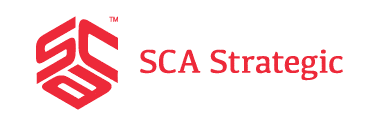Warehouses must be efficient, but creating an effective flow is easier said than done. It’s hard to know where to start in many cases, as inefficiencies can stem from anywhere. Thankfully, that also means you have many opportunities to improve things. Rethinking your pallet racking layout is a great place to start.
How you stack your pallets is more impactful than you may think. Here’s a closer look at why and how you can optimize it.
Why Pallet Racking Layout Matters
Different pallet stacking patterns change how employees move throughout the warehouse. Considering they spend up to half their time walking, minimizing that travel greatly impacts efficiency. How quickly they can get the correct goods on and off shelves has a similar effect.
Your racking layout affects workflows outside of picking and packing, too. Different stacking patterns take up more or less space on the warehouse floor. As a result, they change how much room workers and forklifts have to move and their visibility.
Pallet racking is also a matter of safety. Some systems involve harsher movements than others, potentially damaging fragile goods or endangering distracted staff. Others may include working at heights, introducing fall and toppling risks. Employee safety aside, workplace injuries lead to hundreds of thousands of lost days a year in missed productivity.
Pallet Racking Layouts You Should Know
Most warehouses stick to selective racking, as it’s the most versatile and easiest to implement. However, that doesn’t mean it’s the most effective. You can choose from plenty of other options, including:
- Double-deep racking
- Push-back racking
- Pallet flow racking
- Drive-in racking
- Drive-through racking
- Mobile systems
- Hybrid solutions
Here’s a closer look at some of these less popular but innovative pallet racking layouts to optimize your warehouse flow.
1. Double-Deep Racking
Double-deep racking is a type of selective racking where you place pallets on a stationary shelf, allowing access to any pallet without moving the others. Unlike conventional selective solutions — which stack shelves just one pallet deep — this method uses two back-to-back rows.
The primary advantage of double-deep storage is it offers more storage capacity. You’ll create room for more shelves by halving the number of lanes. You may need specialized racks, leading to higher costs, but the increased capacity may compensate for that.
Double-deep racking is less flexible than single-deep selective racking, so it’s best for last-in-first-out (LIFO) inventory with low variety. If you fall into that category, it’s a handy, affordable way to boost storage capacity.
2. Push-Back or Pallet Flow Racking
Push-back pallet stacking patterns are another LIFO-optimized method. As the name implies, this involves pushing pallets back with another pallet when loading. When you take one out, gravity moves the pallets behind it up to the front for easy accessibility.
Pallet flow racking also uses built-in rollers to move pallets with gravity but favors first-in-first-out (FIFO) inventory. Instead of pushing old items back with new ones, you place new ones on one side, moving old ones forward to unload on the other. Because U-shaped warehouse flows are the most common warehouse layouts, this method works well for most facilities.
Both these methods enable higher productivity because pallets naturally slide into prime picking positions. However, you have to store a single SKU in each lane and these systems aren’t very flexible.
3. Drive-In and Drive-Through Racking
Drive-in pallet racking layouts are another great way to boost storage density. In this setup, forklifts drive directly up to the racks for loading and unloading. It uses large stacks of pallets and condensed shelving to minimize aisles but leaves room for forklifts to move, minimizing walking time.
Drive-through racking is similar but uses opposite sides of the racks for loading and unloading. It’s the FIFO alternative to drive-in solutions, which are better for LIFO inventory.
Both these racking methods are highly efficient and cost effective if you have to store large amounts of the same product. The price of that storage density is less flexibility, as it only really works with large orders and a small number of SKUs. Opt for something else if you sell a wider variety or experience more demand volatility.
4. Mobile Pallet Racking
If none of these more conventional methods meet your needs, consider a mobile pallet racking solution. This system is effectively a selective racking solution in your day-to-day operations, but instead of using stationary shelves, the racks are mobile. That way, you can easily rearrange them to access items from another side, create more lanes or widen aisles.
The main benefit here is flexibility. Moving racks around at will is a huge advantage if your inventory and demand change often. Supply chain disruptions keep becoming more common, so that applies to an ever-increasing number of businesses.
This method limits your vendor options because it’s relatively uncommon, so expect to pay more upfront for these shelves. It’s also less cost effective for large storage volumes or businesses selling just a few SKUs.
5. Hybrid Systems
Sometimes, there’s no clear winner for which pallet stacking pattern is best for you. One method may work great for half of your inventory but not the rest. Hybrid systems are the answer.
If you have a large, varied inventory, you probably don’t encounter the same issues for every SKU. As a result, sticking to one method for the whole facility will always mean a trade-off somewhere in your operations. Combining strategies lets you minimize those trade-offs by using the most relevant solution for each part of your inventory.
Consider using a mobile or selective racking solution for low-volume, high-volatility goods. Use a pallet flow or drive-through option for your higher-volume, low-volatility SKUs. Combining techniques will cost more upfront and require more physical space, but it’s the most cost-effective solution for a large, varied inventory.
Best Practices to Keep in Mind for Pallet Racking
Regardless of which pallet racking layout you choose, you should keep a few things in mind. First, don’t overlook how you stack items on the pallets themselves. In general, you should place heavier items on the bottom — which prevents damage through a lower center of gravity — and wrap them tightly to prevent spillage. Other pallet-stacking best practices include:
- Keeping cylindrical items in place with roll cradles.
- Distributing weight evenly across the pallet.
- Ensuring the pallet is free of cracks, protruding nails and other damage before use.
- Paying close attention to weight and height limits.
It’s also best to make the most of your vertical space for warehouse storage wherever possible. Warehouse prices are reaching record highs, so expanding is cost prohibitive. You can add more capacity while avoiding those expenses by growing up instead of out. Add higher shelves before adding new rows to keep floors clear and minimize spending.
You should also consider the equipment you use to move goods through the warehouse. Keep your aisles wide enough for your forklifts to maneuver, especially when using a drive-in or drive-through system. If you manually pick items, you can narrow lanes but ensure there’s enough room for workers to see around corners. Automated retrieval systems may need extra space, too.
Try New Pallet Stacking Patterns to Optimize Your Warehouse
If you want to improve your productivity but don’t know how to start, try new pallet stacking patterns. A simple layout change can give you more storage space, improve forklift maneuverability or decrease traffic, all of which enable a better warehouse flow.
Pallet layouts aren’t the only way to optimize your warehouse, but they’re an excellent starting point. Consider how these innovative techniques can work for you, try them out and reap the benefits.

















